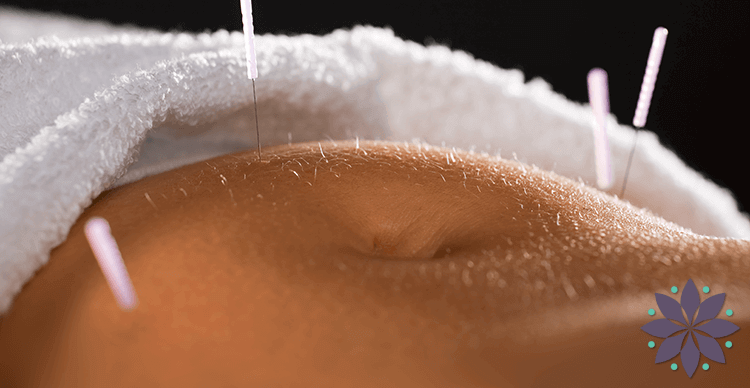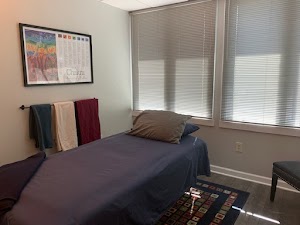
The Initial Consultation
During an initial interview with your Acupuncturist, expect to be asked a good deal of questions that you may not see as relevant to the pain or discomfort you are experiencing. All of this information is key to developing a proper Chinese diagnosis and treatment strategy for your condition. If you are aware of and can describe any and all symptoms you experience, your Acupuncturist can better assess the root causes of the condition and design a customized treatment, targeting current signs and symptoms and relative imbalances within the body.
Chinese diagnosis involves inquiring about physical and emotional symptoms you are experiencing as well as your past health history. Other methods of examination are used to form a comprehensive understanding of why you are experiencing these specific symptoms. Careful observation, palpation, as well as tongue and pulse diagnosis are used to assess energetic imbalances in the body and develop a Chinese diagnosis and treatment strategy.
The Acupuncture Treatment
~ will last about 60 minutes. You can expect that needles could be placed in any body surface, as there are Acu Points all over the body. The needles used in Acupuncture are tiny, solid, sterile, single-use needles and are virtually painless upon insertion. The insertion of the needles feels similar to a mosquito bite or a small pinch. This may be followed by a mild sensation of aching, fullness, numbness, or tingling. These sensations pass quickly, however, and most patients become deeply relaxed. The needles are placed in specific Acu points that are chosen specifically for you and your condition. In many cases, the needles are placed in areas that are far from the problem. For example, many of the most effective points for treating headaches are in the feet. Anywhere from 6 to 20 needles will be placed and the patient will retain the needles between 20 and 40 minutes. The Acupuncturist may perform more than just Acupuncture. There are other modalities such as Cupping, GuaSha, Moxabustion, and Asian Bodywork Therapy that may be used during your treatment.
After Treatment
~ you may experience immediate improvement regarding your chief complaint or just an overall feeling of well-being. To get the most out of your Acupuncture treatments, remember to take it easy afterward. No immediate stress or hard work.
Regular movement is essential to encouraging the free flow of Qi in your body, so incorporating movement into your daily routine will enhance your energetic, physical, and mental health. Walking, Yoga, Stretching, Breathing exercises, Meditation, Tai Chi or Chi Gong would all be practical ways to promote the movement of Qi in the body and contribute to resisting the adverse effects of stress, worry, and irritation on our bodies, minds, and relationships. Healthy foods, balanced nutrition, and good water are other ways to support your overall health & well-being.
Follow up Treatments
~ will last approximately 60 minutes. You should come in for follow up treatments prepared to describe any symptoms you have been experiencing since your last treatment. Any information you can provide will help your acupuncturist with their evaluation and treatment of your condition.
How many Treatments Will I Need & What Results Should I Expect?
Acupuncture is not a quick fix. The effects of Acupuncture are cumulative. Each treatment builds upon the last one- and the state of balance at the time of treatment. Therefore receiving several frequent treatments in the beginning, will establish a solid foundation and produce results more quickly. Acupuncture is like eating well or working out: you can’t just do it once and expect it to have a significant and lasting impact on your health. Ultimately, the goal is to get you to the point that you can stop treatment or transition to maintenance care as quickly as possible.
About 80% of people will experience a positive change or improvement in their condition within 4 to 6 treatments, although this does not mean that your symptoms will disappear, only that your pain or symptoms are less severe; you are sleeping more restfully, your energy level has increased, your mood is brighter, you are having more “good days” than you did before, etc. This is an encouraging result which suggests that by continuing care you will experience more and more relief. Gradual improvement in symptoms is the most common experience people have when receiving Acupuncture.
Considering that chronic conditions have been manifesting for a longer period of time, we understand that the healing process will take some time as well, and anticipate 10 to 20 treatments depending on individual circumstances. Acknowledge that Acupuncture is sending the body a message and it may take time for your body to respond.
The Healing process
It is difficult to predict upfront how quickly your body will respond to acupuncture. It is important to mention that there is a small percentage of people, about 10%, who respond very quickly & strongly to acupuncture. This means they will notice dramatic and lasting results from just a few sessions. Then there is another 10% who may not respond as well to acupuncture and receive only minimal benefit.
About 20% of patients may experience what is called a “Healing Event or Crisis”. This is where current symptoms could intensify for a brief period of time before clear improvement occurs. This could also be an event where “old” symptoms, that haven’t been present for quite some time, resurface again before disappearing. No need to worry, this is just your body’s reaction to the adjustment in energetic balance.
You and Your Healing process
Acupuncture stimulates the intrinsic healing abilities of the body and encourages balance throughout the whole system. Yet, Acupuncture, just like Chiropractic, Massage, Yoga, Exercise, or Meditation, is just a tool in healing. You and your body-mind are the most important piece of your own healing!
The practitioner and patient are equal partners in the healing process. As a practitioner, it is my task to assist and encourage each patient on his or her path to wellness. Setting goals and reevaluating progress are essential to the process and development of future treatment strategies. As the patient, participation in the process is essential to positive lasting results.
The best ways to promote your own health are by drinking good water, eating healthy foods, getting plenty of fresh air, moving your body, and finding time to being still. Moderation is the key to everything!




 My path to oriental medicine came through my experience with massage & bodywork. For over 20 years I have been studying and practicing massage therapy, but it was when I discovered Shiatsu (acupressure), that I realized there was something very powerful about Chinese Medicine…
My path to oriental medicine came through my experience with massage & bodywork. For over 20 years I have been studying and practicing massage therapy, but it was when I discovered Shiatsu (acupressure), that I realized there was something very powerful about Chinese Medicine…